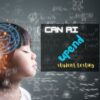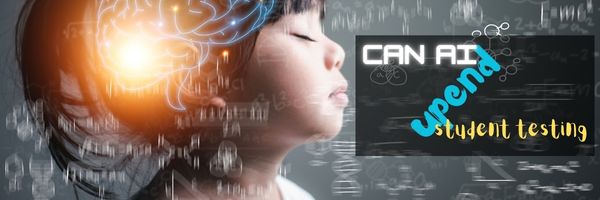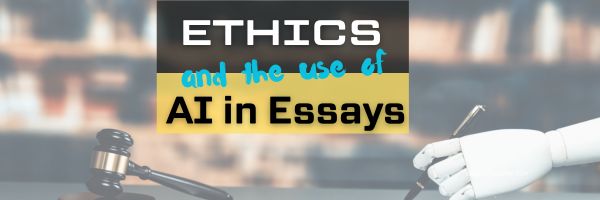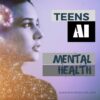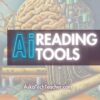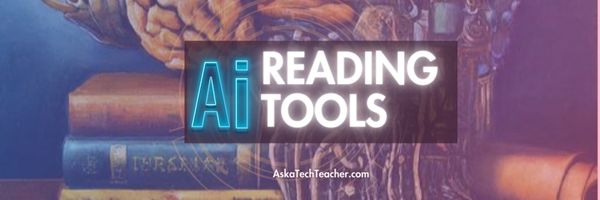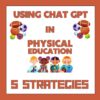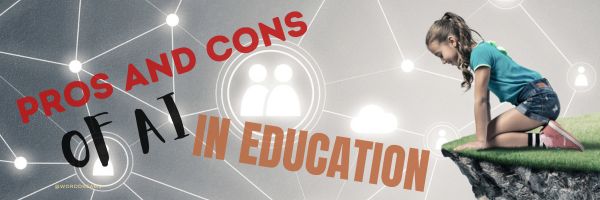Tag: AI
13 AI Detectors and 11 Plagiarism Detectors
Here are popular online resources to teach about AI detection and Plagiarism detection:
AI Detector
Click here for updates to this list:
- AI Content Detector–from Crossplag
- AI Text Classifier–from the creators of ChatGPT to identify writing from an AI
- ChatGPT–has developed their own tool to find AI-generated writing
- Content at Scale AI Content Detector
- Contentdetector.org
- Copyleaks AI Content Detector
- Crossplag–detect AI content
- GPTZero–to find text generated by an AI
- Plagiarismchecker.ai
- TurnItIn ithenticate–new tool to identify AI-generated text
- UNDETECTABLE.AI
- Winston A.I
- ZeroGPT
Finding plagiarism
Share this:
AI has potential to upend student testing
AI has the potential to revolutionize education for better or worse–jury’s still out on that. No one denies it can make student testing more efficient, faster, possibly leading to better educational outcomes for all learners. Key positives:
- Tailor personalized learning paths
- Adapt testing to challenge students at their appropriate level of knowledge
- Provide instant feedback
- Reduce bias
- Analyze data quickly to find learning patterns and trends.
- Identify plagiarism or cheating
But there are drawbacks educators must watch for and may take time to resolve. Check out these concerns:
- Bias and fairness
- Privacy and data security
- Reliability and accuracy
- Dependency on technology
- Digital divide
- Loss of human connection
- Ethical considerations
Here’s a good article from The Hechinger Report that offers an overview of current thinking on how AI is likely to reshape student testing options:
AI has potential to upend student testing
As AI advances, student testing could become highly personalized and dynamic, offering scenarios like empathetic avatar interactions and adaptive questions. While experts acknowledge risks such as bias and access disparities, they foresee AI-driven assessments reshaping education by tailoring tests to individual needs and promoting deeper learning. (more…)
Share this:
5 Innovative Tech Projects for High Schoolers
Great end-of-year projects for high school students, from the Ask a Tech Teacher team:
5 Innovative Tech Projects for High Schoolers
Project-based learning has gained significant popularity in recent times. Emerging as a creative and insightful way for youngsters to learn and practically implement their knowledge, the idea of project-based learning has been encouraged and applauded by teachers worldwide. In fact, students who make use of this technique tend to retain content 22% better than traditional learning.
Many middle and high schools have started incorporating project work into their curriculum, enabling students to learn concepts faster and apply them to real-world scenarios. However, this shift often perplexes students when choosing the perfect project options. Let’s explore a few options. (more…)
Share this:
Ethics and the Use of AI in Essays
Is using AI in your essay writing unethical and a potential reason your teacher may debate your work’s authenticity? Let’s find out the truth through the Ask a Tech Teacher team:
Ethics and the Use of AI in Essays
AI-driven tools and their use in creative writing, specifically with the purpose of writing essays, have long been a subject of heated debate. The argument against AI-powered tools remains the same: any content produced by artificial intelligence can be viewed as plagiarism. This is the same concern that has been posed about essay writing services and the people who use them. Reading a Scamfighter review is part of my routine, so it is easy to confirm that some writing services are indeed unethical and unprofessional if they use plagiarized content to complete your tasks. However, boundaries become murkier when it comes to AI and its role in writing essays. (more…)
Share this:
AI and Writing Essays: Pros and Cons, How Will Students Learn to Write if an AI Writes It for Them?
Explore the benefits and drawbacks of AI in essay writing, including its impact on student learning. Unveil the evolving future of writing education with AI through these suggestions from the Ask a Tech Teacher team.
AI and Writing Essays: Pros and Cons, How Will Students Learn to Write if an AI Writes It for Them?
In the fast-changing digital world, integrating AI into education is both a breakthrough and a problem. AI’s influence in essay writing is growing, highlighting both advantages and significant issues. AI algorithms use massive datasets and natural language processing to produce content that replicates student writing styles as teaching tools. This technology will transform education by personalizing learning and meeting various student demands. (more…)
Share this:
Most Teens Think AI Won’t Hurt Their Mental Health; Teachers Disagree
Generative AI is an exploding influence in education with lots of potential but unknown outcomes. Most people focus on its impact on school research, lesson plans–that sort–but another piece isn’t considered often enough: its impact on student mental health. This next article from but we’ll do in this article from Education Week does
Educators, teens differ on AI’s mental health effects
Teens and educators hold divergent views on its mental health effects of AI, with educators expressing more concern about negative impacts, including cyberbullying and the ability of algorithms to create addictive virtual worlds. Meanwhile, students are more optimistic about AI’s potential benefits.
Full Story: Education Week (3/25) (more…)
Share this:
4 Innovative Ways to Enhance Reading Comprehension with AI Tools
I’m excited about this post from the Ask a Tech Teacher crew–AI Tools for reading comprehension. There are so many directions this could go!
4 Innovative Ways to Enhance Reading Comprehension with AI Tools
Struggling to grasp the essence of a dense PDF or wishing students could wrestle more effectively with complex texts? The key may reside in AI-powered reading assistants, a broad category encompassing everything from summarizers to intelligent note-taking platforms.
Let’s explore five innovative strategies that make the most of these AI capabilities, tailored not only to keep pace with rapid technological advancements, but also to foster enhanced educational experiences! (more…)
Share this:
Using ChatGPT to Revolutionize PE Teaching: 5 Expert Strategies!
Chat GPT is popular among teachers for lots of reasons. For example: to explain concepts, demonstrate ideas, answer specific questions, and assess knowledge. When we asked the Ask a Tech Teacher team to apply it specifically to teaching physical education–not something we usually think of with tech tools–they came up with these great ideas:
Using ChatGPT to Revolutionize PE Teaching: 5 Expert Strategies!
Education is no exception to how artificial intelligence (AI) has been making waves in various industries. AI is used in education to improve learning in multiple areas, including science, math, and languages. It is also having an impact on physical education and health. AI integration can make health and physical education more effective, entertaining, and personalized for teachers and students.
The integration of cutting-edge tools like ChatGPT marks an unprecedented milestone, heralding a new era of pedagogical evolution within PE. (more…)
Share this:
Pros And Cons of AI in Education
Artificial Intelligence–AI–has been around a long time, but caught everyone’s attention with the launch of generative AI, ChatGPT, and DALL-E. These made using AI easy enough for anyone and a viable tool for educators and students.
Or is it? Let’s see what the Ask a Tech Teacher team says:
Pros And Cons of AI in Education
Artificial intelligence (AI) is making major inroads into education. AI tutors, virtual assistants, and adaptive learning platforms are being adopted by schools, colleges, and universities around the world. In addition, many students are using AI to write coursework and essays, which has caused a lot of outrage.
Proponents argue AI can make education more personalized, engaging, and effective while reducing costs and workload for teachers. However, critics worry about the risks and limitations of relying too heavily on AI in education, as well as the problems caused by students using AI rather than penning work themselves.
Here we explore some of the key pros and cons of the increasing use of AI in education, from an education professional’s perspective.
Share this:
Teacher-Authors: What’s Happening on my Writer’s Blog
A lot of teacher-authors read my WordDreams blog. In this monthly column, I share the most popular post from the past month on my writer’s blog, WordDreams.
Here is one of the popular posts:
AI-generated art is a game-changer for writers who do their own marketing and newsletters. I was reminded of that when I received a newsletter from good blogger friend Luciana Cavallaro, author of amazing historical fiction centered in ancient Rome. She sent a newsletter and wanted to include an image of a coach being hit in the face by a volleyball (don’t ask–it’s complicated). As close as she could get was this image:
I accepted her challenge to find a better image and turned to DALL-E, one of the new platforms where AI generates art. Here’s what I got in about a minute:
This is new legal territory, but current thinking is that these images are free to use, owned by no one, similar to the legal permissions allowed by public domain images. Here’s an infogram explaining that, taken from DALL-E’s terms of service:



